News
‹ back to weather news
News
-
Why Queensland has been getting all the rain
Felix Levesque, 3 April 2025Multiple flooding events have occurred in Queensland since the start of 2025, but why?
Last month was Australia’s hottest and 4th-wettest March on record. Queensland was especially wet, registering its 3rd wettest March on record. This moisture combined with the very warm temperatures around the country to bring the warmest March minimum temperatures on record for Queensland, averaging 2.66°C above the long-term average. But why was Queensland so wet in March?
The state of the Pacific Ocean
The Bureau of Meteorology kept the El Niño Southern Oscillation (ENSO) dial in the neutral phase over the past summer, however the equatorial Pacific Ocean showed signs of La Niña at times. As seen in the image below, cooler than average sea surface temperatures have featured over the central equatorial Pacific Ocean, in a region called the Niño3.4.
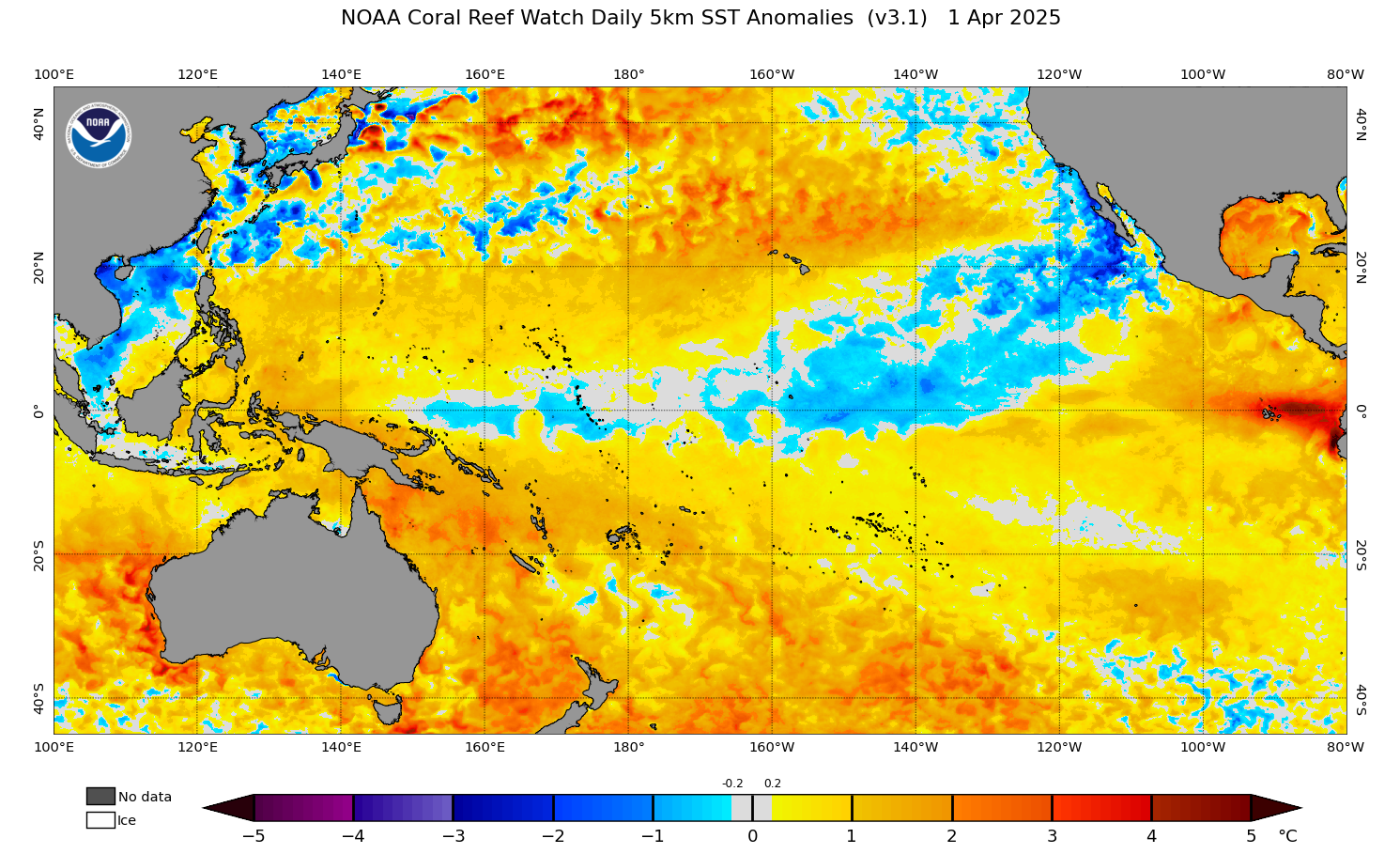
Image: Sea Surface Temperatures across the Pacific Ocean on April 1, 2025. Source: NOAA.
The coldest sea surface temperature over the region were seen during January and February, before a surge of more moderate temperatures moves in from the east. The figure below shows the evolution of the Niño3.4 Sea Surface Temperature Index. The index can be seen briefly dropping below -0.8°C around late 2024 and early 2025, around the time the central equatorial Pacific Ocean sea surface temperatures were the coldest.
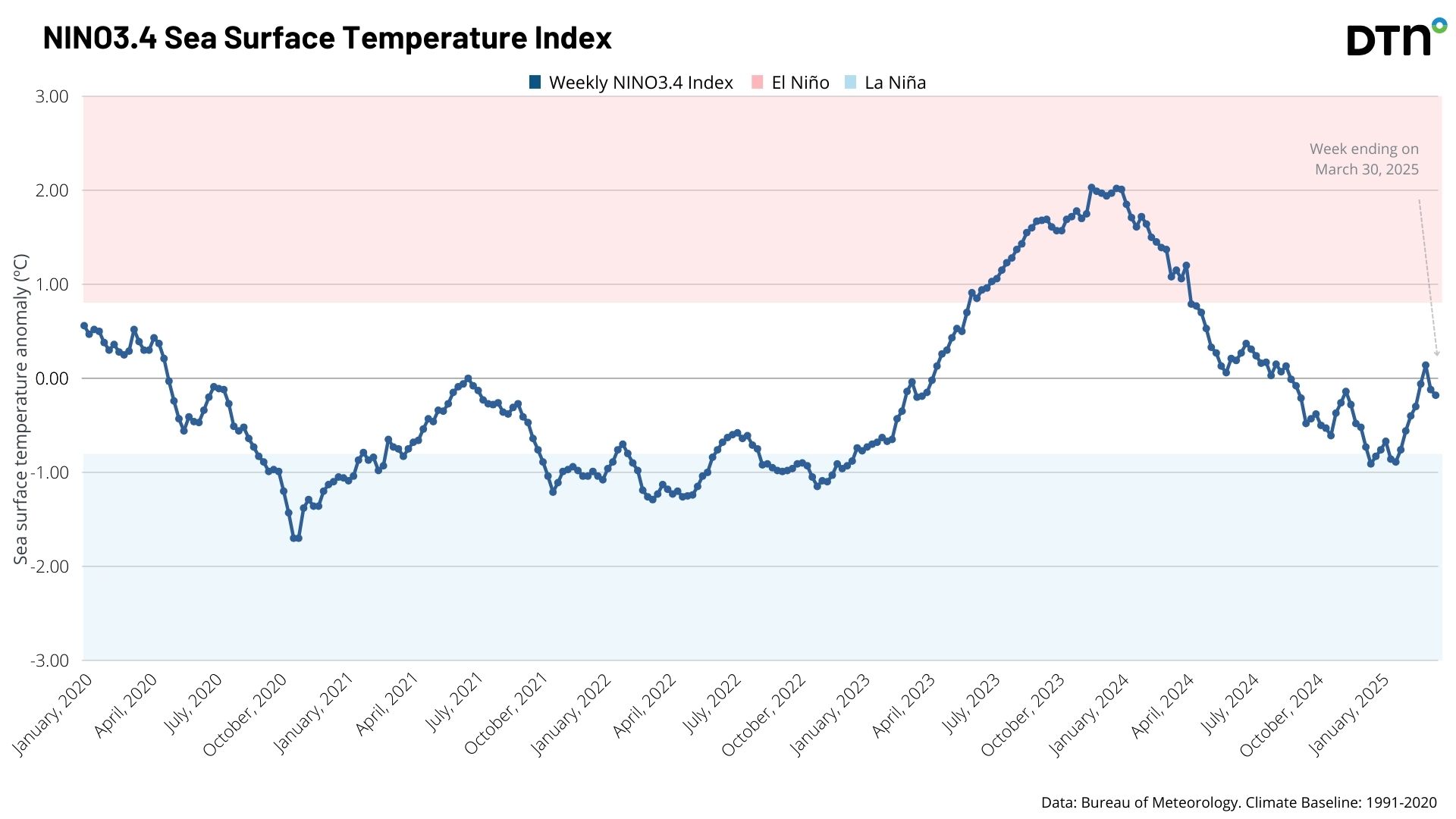
Image: Niño3.4 Sea Surface Temperature Index over the past 5 years.
Conditions across the central Pacific Ocean were enough for the US’s Climate Prediction Center (CPC) to declare it a La Niña event in early January. The US’s CPC has a weaker threshold of -0.5°C compared to the -0.8°C threshold used by the Bureau of Meteorology (BoM) in Australia, along with atmospheric response thresholds.
This La Niña like pattern has mostly affected Queensland with very wet conditions in the past few months, as seen in the rainfall analysis for March 2025 below.
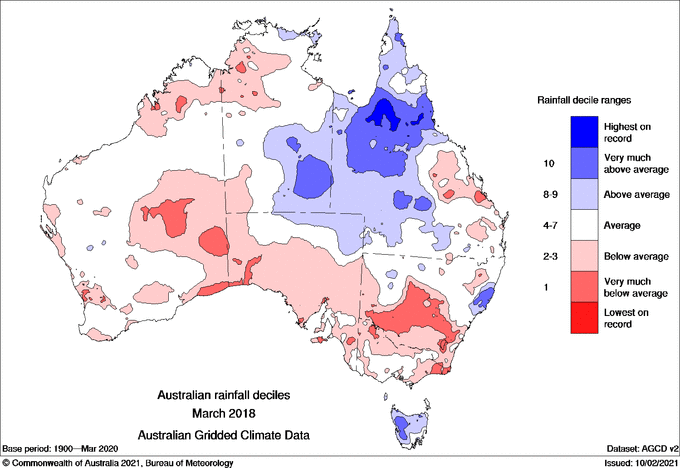
Image: Rainfall deciles across Australia for March 2025. Source: Bureau of Meteorology.
The widespread above average rainfall across northern and outback Queensland is similar to that of March 2018, as seen in the image below. The 2017-18 season featured a weak and delayed La Niña event.

Image: Rainfall deciles across Australia for March 2018. Source: Bureau of Meteorology.
Record warm sea surface temperatures and other considerations
While the ENSO phases might have been similar in 2017-18 and 2024-25, ocean temperatures closer to Australia have been at record warm levels over the past few months. This led to enhanced moisture in the atmosphere, helping fuel all the heavy rain events across Queensland.
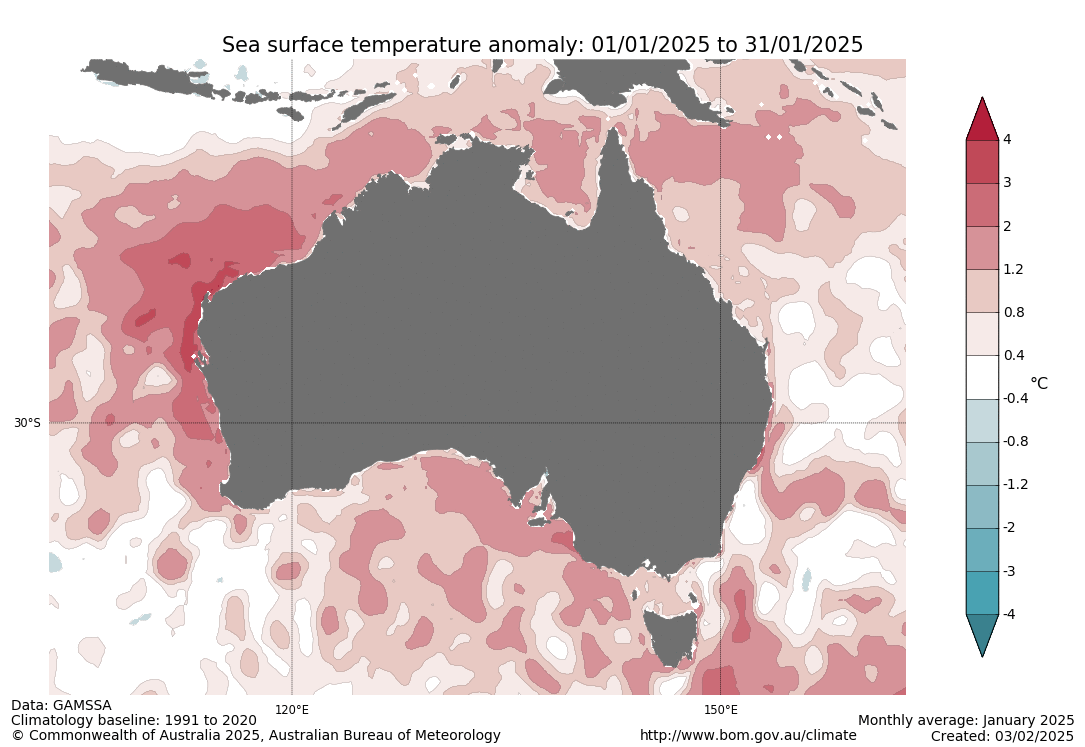
Image: Sea surface temperature anomalies around Australia in January. Source: Bureau of Meteorology.
Some other notable features to impact Queensland this month included Tropical Cyclone Alfred, which brought 275mm in 24 hours to Brisbane, marking the city’s wettest day in half a century. A monsoonal burst and an active Madden-Julian Oscillation over the second half of the month harnessed the available moisture around Queensland bringing intense rainfall to the north, and then over the state’s outback.
Outlook for ENSO and winter
Even by the US’s definitions of ENSO, the current La Niña event will not last much longer, as seen by the Niño3.4 index returning closer to a true neutral phase in recent weeks. Current consensus across global models favours the neutral phase of the ENSO to remain over the coming winter. However, sea surface temperatures around Australia and the globe are likely to remain very warm, promoting above average rainfall over eastern Australia, as can be seen in the forecast maps below for April and May.
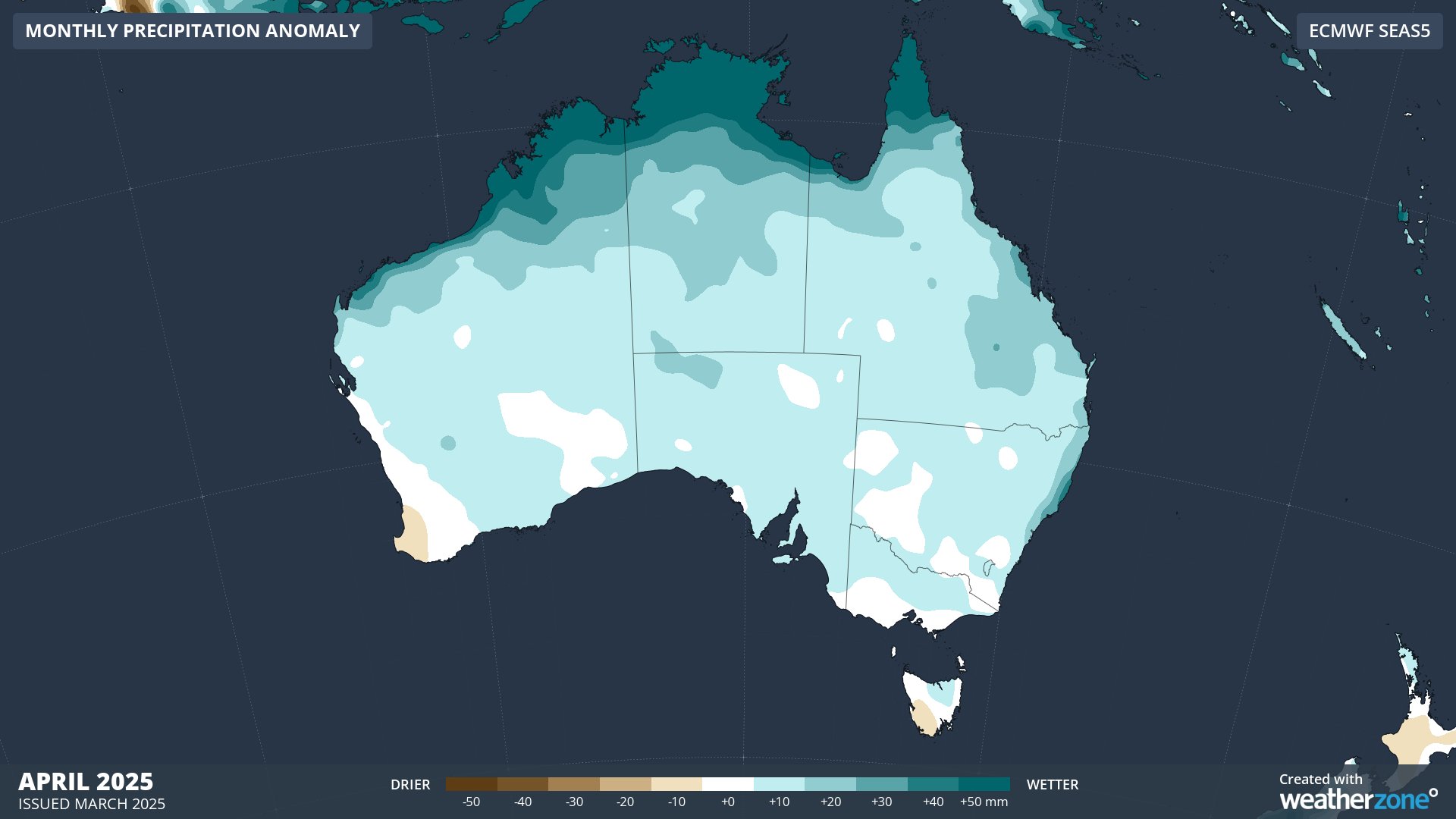
Image: Forecast rainfall anomalies for April.
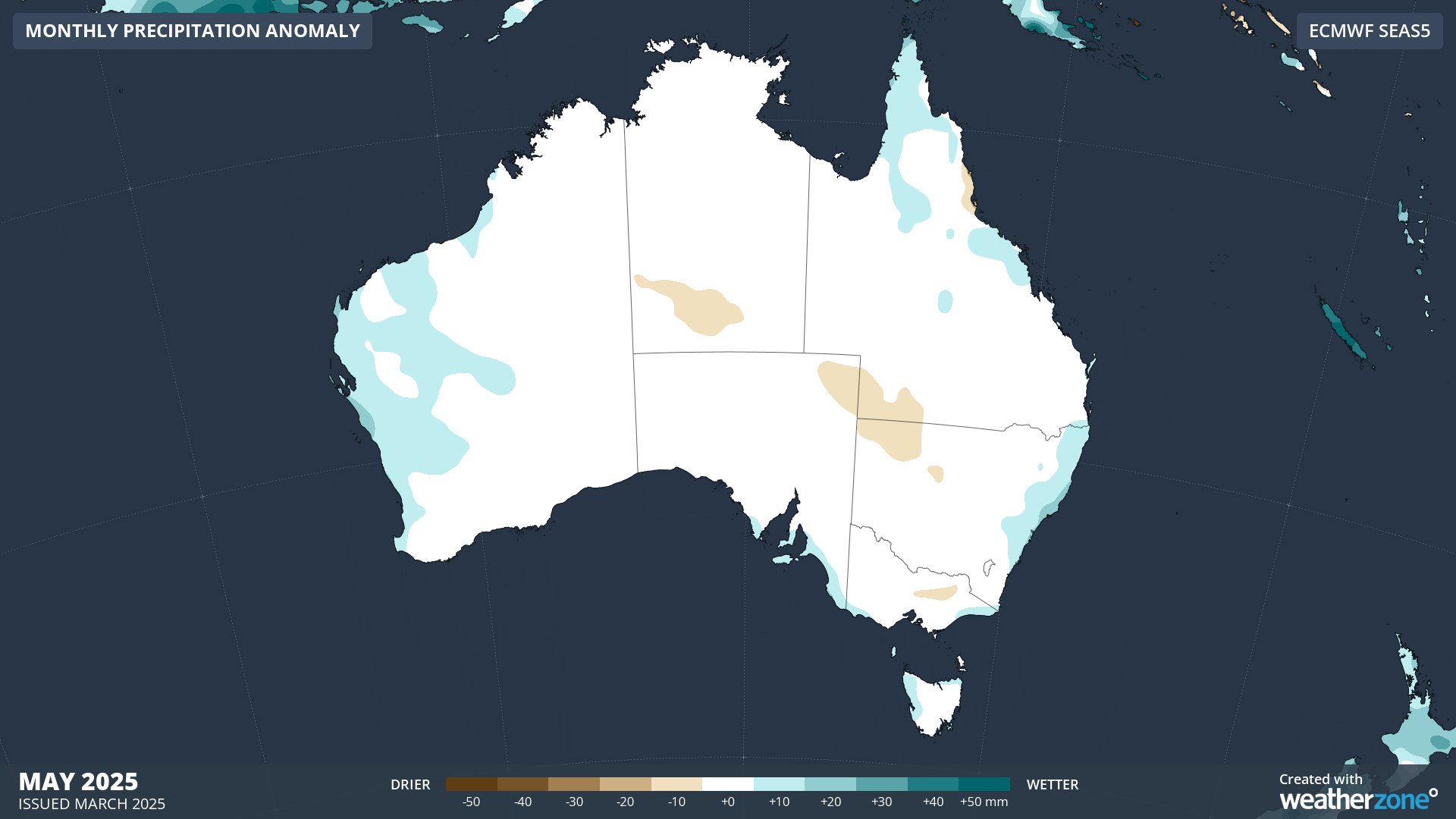
Image: Forecast rainfall anomalies for May.
- Other news
- Thu 03 Apr 2025 Clouds clear to reveal immense scale of Queensland flooding
- Thu 03 Apr 2025 Daylight saving ends: how to remember which way to turn your clocks
- Wed 02 Apr 2025 How a West Australian cyclone saturated Queensland
- Wed 02 Apr 2025 Damaging surf battering NSW coast
- Tue 01 Apr 2025 Australia's hottest and 4th-wettest March on record

